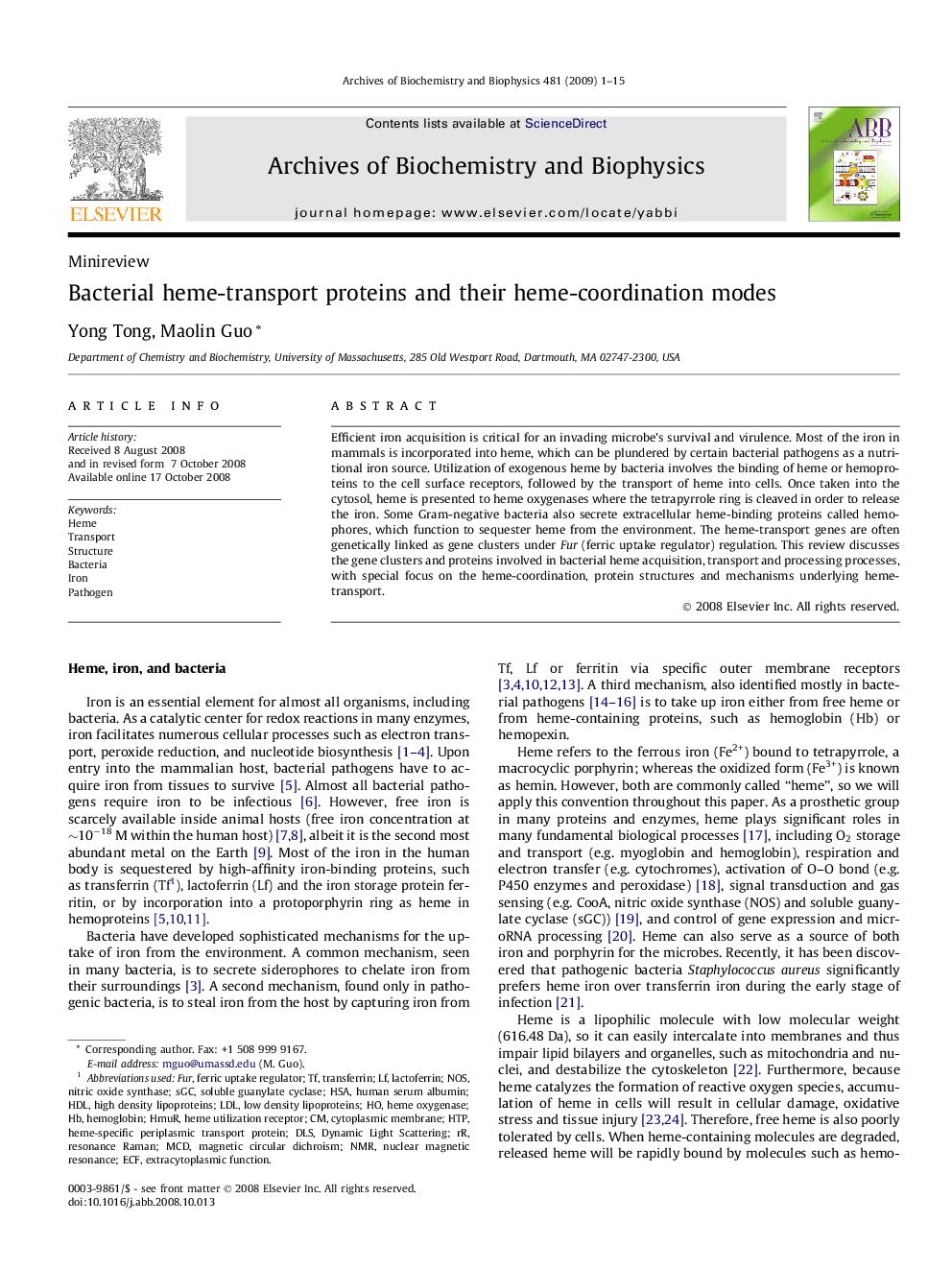| Article ID | Journal | Published Year | Pages | File Type |
|---|---|---|---|---|
| 1926444 | Archives of Biochemistry and Biophysics | 2009 | 15 Pages |
Efficient iron acquisition is critical for an invading microbe’s survival and virulence. Most of the iron in mammals is incorporated into heme, which can be plundered by certain bacterial pathogens as a nutritional iron source. Utilization of exogenous heme by bacteria involves the binding of heme or hemoproteins to the cell surface receptors, followed by the transport of heme into cells. Once taken into the cytosol, heme is presented to heme oxygenases where the tetrapyrrole ring is cleaved in order to release the iron. Some Gram-negative bacteria also secrete extracellular heme-binding proteins called hemophores, which function to sequester heme from the environment. The heme-transport genes are often genetically linked as gene clusters under Fur (ferric uptake regulator) regulation. This review discusses the gene clusters and proteins involved in bacterial heme acquisition, transport and processing processes, with special focus on the heme-coordination, protein structures and mechanisms underlying heme-transport.
